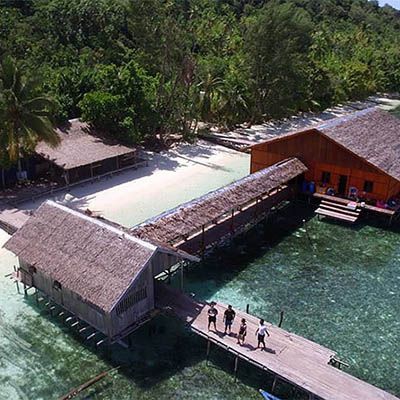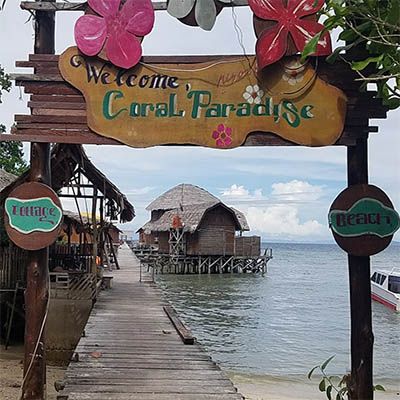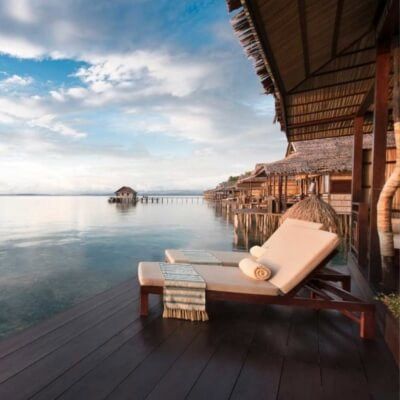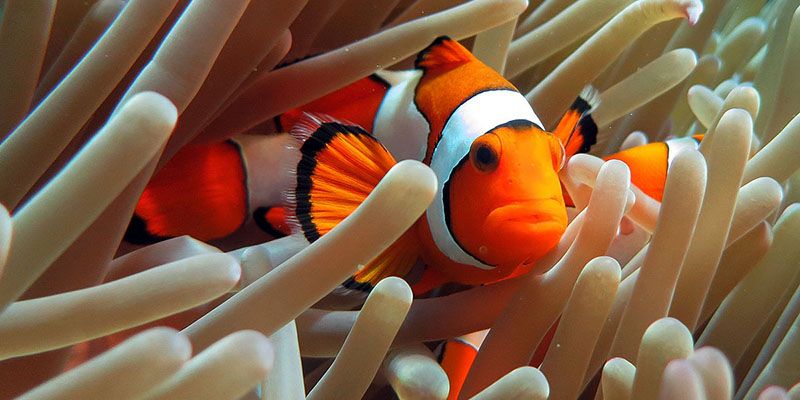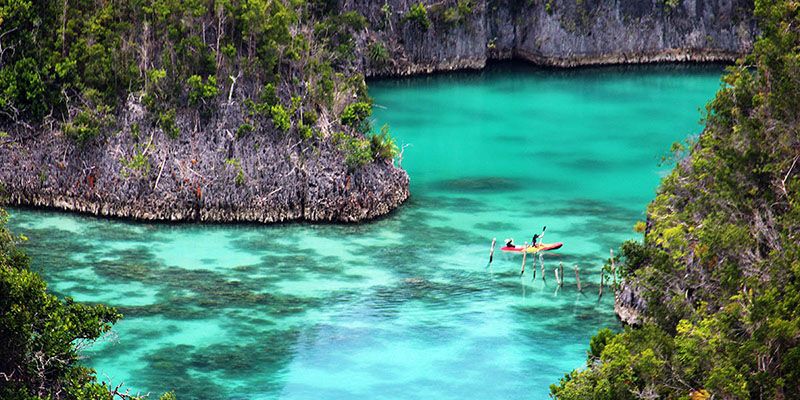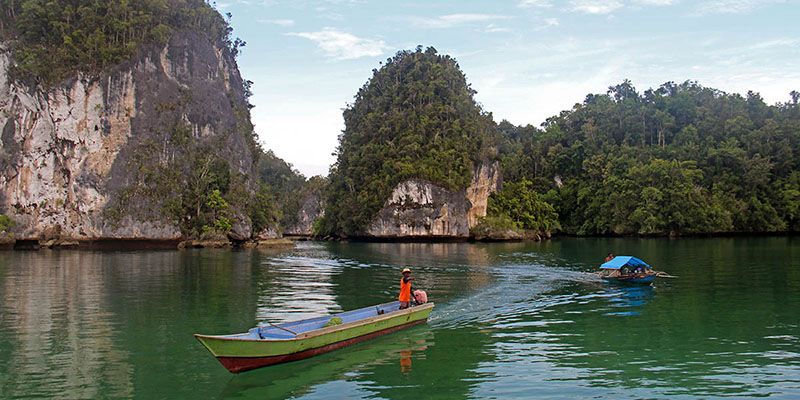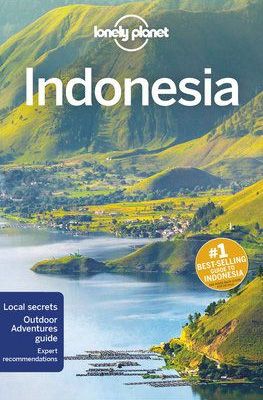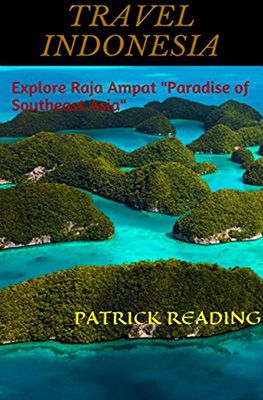In the east of Indonesia lies the province of West Papua just south of the equator. The area covers the peninsulas of Vogelkop, Bomberai and Wandammen, and the surrounding islands of Raja Ampat and the lesser-known islands of Doom, Roon and Rumberpon.
Vogelkop in West Papua
The Vogelkop Peninsula is connected by a narrow mountain ridge with the rest of the Indonesian part of new Guinea. In the north you will find barely passable high mountains, the highest peak of which is Gunung Umsini, 2926 metres’ high. In the south there is flat low country. On the Vogelkop you see the area around the port city of Sorong, mainly tropical rainforest.
Large parts of the peninsula are protected natural areas. One of the most famous of these is the Arfak Mountains southwest of the city of Manokwari. The area is a popular destination for trekking to admire the nature and wildlife of the island. Mountain Bike Tours can also be booked in the mountains. In the Bay of Manokwari wreck diving is also pretty good!
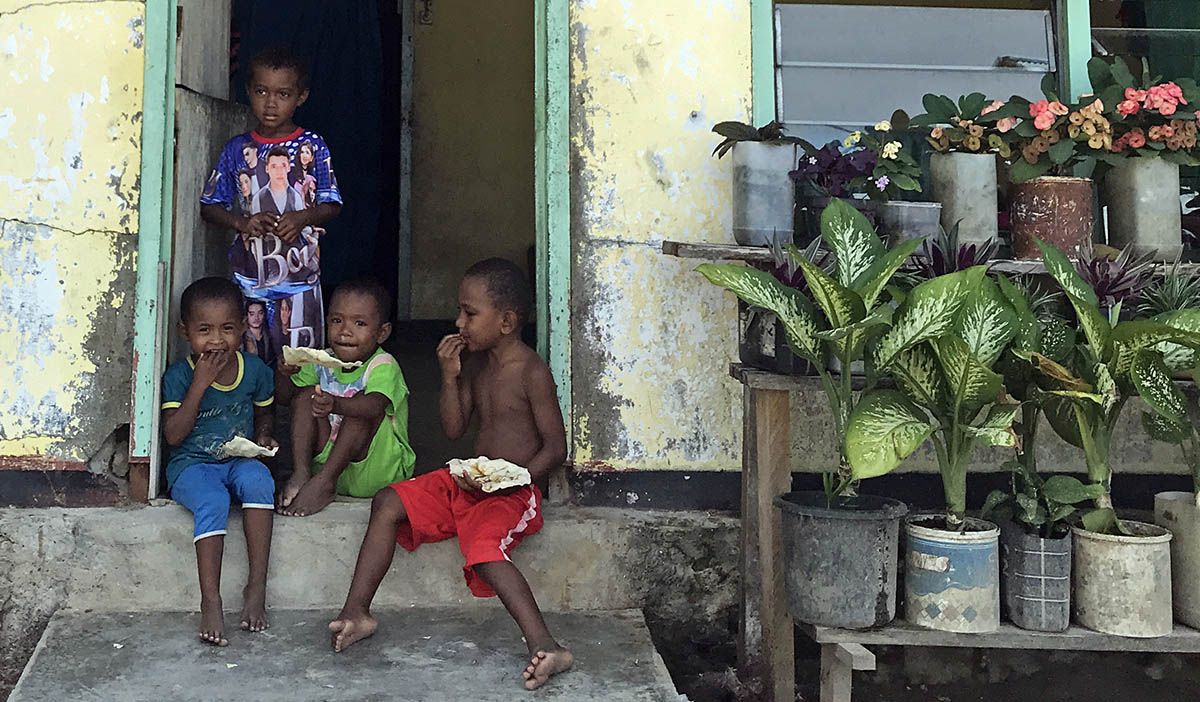
Wandammen in West Papua
The Wandammen nature Reserve, protected by the World Wildlife Fund, is located southeast of Vogelkop. From the north of the relatively small peninsula, runs a high mountain with peaks up to 2252 metres. West of the mountain range, the slopes are less steep than in the east. Here you will find most of the few (small) villages. In Wasior and Miei you will find many remains of colonial Netherlands. Because of its isolated location, you will find overwhelmingly pure nature.
At the Wondiwoi National Park in the interior, you will also have the unique Wondiwoi tree kangaroo in addition to special bird species. On the west side of the peninsula you have the Teluk Cenderawasih National Park, Indonesia’s largest marine park where more than 150 coral species and fish and turtle species are protected.
Bomberai
This peninsula, south of Vogelkop, consists entirely of tropical rainforest and marshes. In the northwest lies the most distinguished city Fakfak at the foot of the Fakfak Mountains. It is the gateway to the region. Due to the excellent facilities in Fakfak, this part of Bomberai is reasonably visited. The attraction is the incredibly beautiful coastline of slate cliffs and hills, rivers, caves and densely forested islands. The interior is virtually impenetrable.
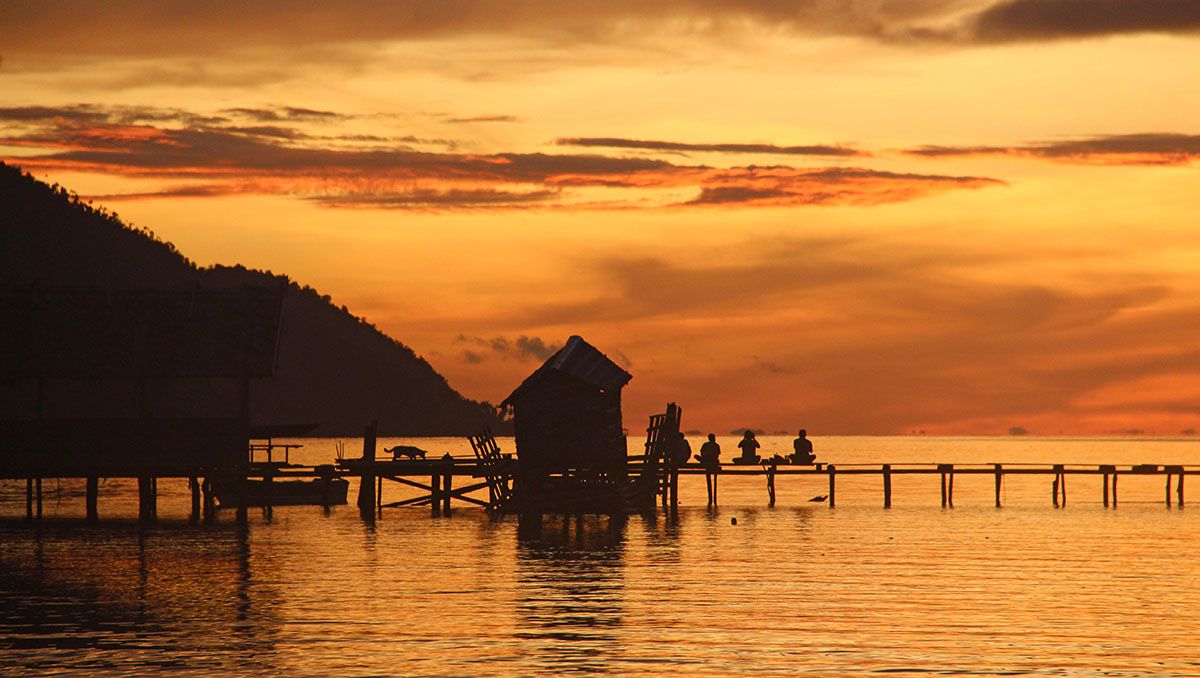
Raja Ampat in West Papua
Many consider this part of the world as one of the last paradises and pearls of Nature on Earth. The islands of Raja Ampat (Four Kings), located west of the Vogelkop, consist of the four major islands of Waigeo, Batanta, Salawati and Mysol, and several smaller ones.
The hilly islands are sparsely populated and densely covered with tropical rainforest. Parts of the islands Waigeo and Batanta, which we have visited, are protected nature reserves. The islands of Raja Ampat are surrounded by healthy, particularly vibrant coral reefs and for that reason they are a popular diving destination.
Accommodation in West Papua
Vogelkop
For a stay at the Arfak Mountains you fly to the coastal town of Manokwari, which is considered the most Papoeaanse city of Papua. In the city you have some reasonably affordable hotels of fine quality, such as the Swiss-Belhotel Manokwari, the Aston Niu Manokwari Hotel & Conference Centre, the Valdos Hotel and the Mansinam Beach Resort.
The gateway to the islands of Raja Ampat is the city of Sorong. In this city the choice of reasonable to good hotels/resorts is much larger than in Manokwari. We stayed in the Kasuari Valley Beach Resort, a great resort although we found the price too high compared to what you get for it.
Wandammen
In Waisor You have some hotels, including Aitumieri Inn, the Darmaji and the Iriati hotel. From here you can visit the Wondiwoi and Teluk Cenderawasih National Park.
Bomberai
There is very little accommodation to be found in the completely forest overgrown Bomberai. In the town of Fakfak, one of the oldest cities of Papua, you have something like eight hotels, including the Grand Papua, HI and Kokas Mini Hotel.
Raja Ampat
There are several islands that have accommodation in the form of (cheap) homestays and (somewhat more expensive) resorts. Most homestays and (eco)resorts offer full board as standard. You only have to pay extra for soft drinks and locally brewed Bintang. At the resorts the facilities and often also the hygiene is better arranged than at homestays. We stayed on the islands Kri, Waigeo and Batanta. Among travellers the islands Misool and Fam are also popular.
Kri
On Kri you can go to the – in our eyes – too expensive resort of Papua Diving. If you are satisfied with less luxury, you have a choice of quite a few homestays. You will then get a cabin on stilts, whether or not in the sea or on the beach. One of them has a shared bathroom and toilet, the other has one that comes standard with your room. We were at the fairly large Yenkoranu because of the good facilities for divers and the large, cosy, covered terrace on stilts. we also heard good stories from other travellers about Mangkur Kodon and Brar.
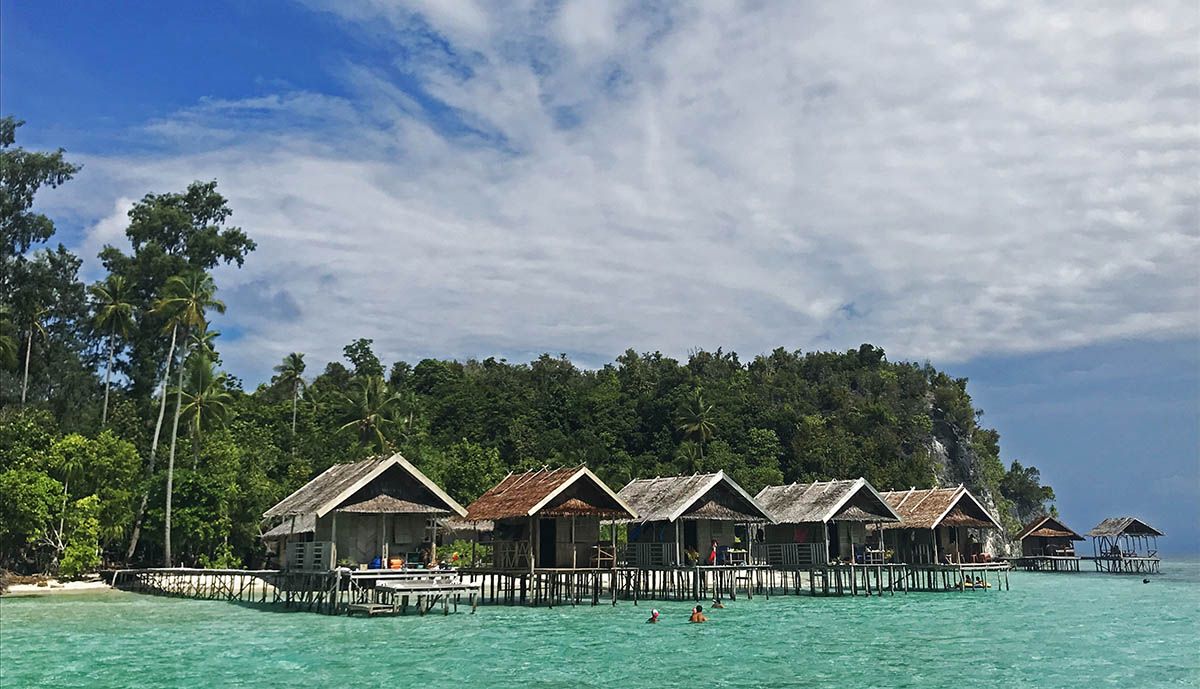
Waigeo
On the large island of Waigeo, the choice of accommodation is much larger. Besides many homestays on the coast and a little deeper into the interior, there are many resorts, some of which are of course more luxurious than others. Most resorts offer diving and snorkelling. At only a limited number of resorts you can also get a kayak to go kayaking in the immediate vicinity of the resort.
We stayed in the Coral Paradise resort, located between the port city of Waisai and the mouth of the bay of Kabui. A relatively affordable and very pleasant resort with a large, spacious bedroom and bathroom, and a nice terrace facing west to see the sun sink into the sea.
Batanta
The last five days in Raja Ampat we stayed on the island of Batanta at the luxurious Papua Paradise resort. We already booked this before the trip because we thought that after many nights in less luxurious homestays we would be ready for it. Afterwards we regretted this choice, because we allowed ourselves to be too guided by the tight time schedule.
Our stay at Papua Paradise made up for our trip in Raja Ampat! Very friendly staff available any time of the day. Our house on stilts in the sea was very comfortable and thanks to a rather large mosquito net (actually more like a tent!) we were also very well protected from the mosquitoes at night. The dive centre exceeded our expectations. There are many dive sites, diving guests and boats so we could decide where we wanted to go.
Because you cannot always rely on the times when the ferries moor, we thought it would be a good idea to spend the last night before our return flight to the Netherlands in Sorong. We stayed at the Kasuari Valley Beach Resort, a great resort but far too expensive for what you get. With hindsight that was not necessary because the Papua Paradise Resort takes your flight into account. They bring you to Sorong (and even the airport!) on time.
Yenkoranu Homestay (Kri)
A simple but excellent homestay with an excellent diving centre. The houses are located on land. You have new and old houses. The old houses especially can be refurbished. A pleasant atmosphere, also thanks to the large covered terrace above the sea.
Coral Paradise in Waisai (Waigeo)
Very pleasant, modest resort for a nice price. The cottage on stilts is particularly spacious. Bathroom is as large as the bedroom. Friendly owners and staff. Three times a day there is a buffet included in the price, as well as a snack around ‘drinks time’. The food is good, at worst a bit monotonous.
Papua Paradise (Batanta)
Fantastic eco resort. All spacious cabins are on stilts above the sea and are very comfortably furnished with a mosquito net the size of a room. The buffet is fantastic and the service extremely friendly and helpful. The dive centre deserves an award!
Healthcare
For West Papua, vaccinations for DTP and Hepatitis A are recommended. For long stays, it is also advised to be vaccinated against typhoid fever. If you are also going on long hikes through the jungle and expect to come into contact with wild animals, then a rabies vaccination is also wise. Get information from a tropical doctor.
Apart from vaccinations, it is wise to be protected from malaria because malaria occurs below 2000 metres in all of West Papua (including the islands of Raja Ampat). Although some people only take an emergency cure on a trip (only taking pills if they get symptoms of malaria), the cure of taking a pill daily is most recommended.
Because our pills (doxycycline) were delivered too late to our home in the Netherlands, we bought the pills in Jakarta. You first have to see a doctor for a consultation and then you get a prescription for the pharmacy. All in all, a lot of hassle but we were luckily only out €8 for the consultation, the recipe and four weeks of pills for two people.
Wear as many garments as possible with long sleeves and trouser legs and use an insect repellent with DEET. We also had a mosquito net but all the accommodation (homestays and resorts) had a mosquito net on top of the bed.
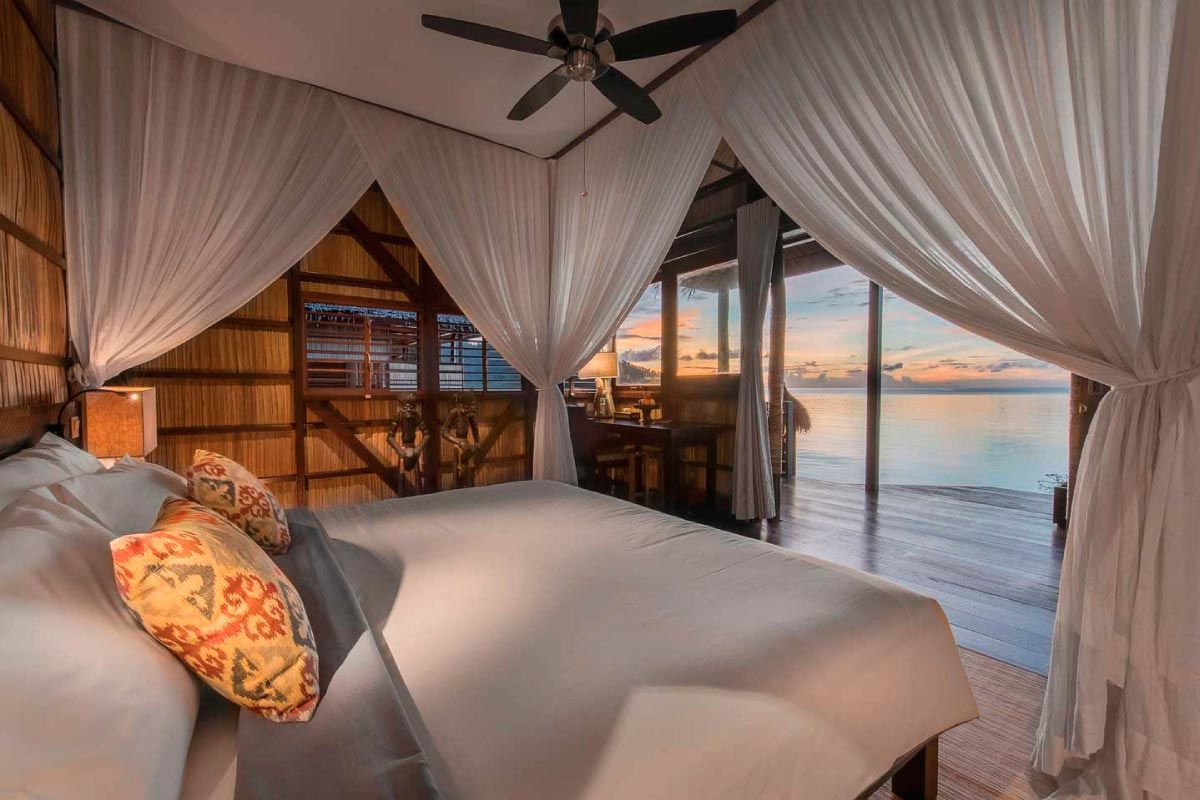
Something to be reckoned with is that you are away from the medical facilities. This applies to both the ‘mainland’ of West Papua and the islands of Raja Ampat. Small medical treatments do not pose a problem: if there is no doctor available on your island (like at Kri), you will quickly be taken to a neighbouring island by boat. In other cases, you have to go back to Sorong or even to other major Indonesian islands.
For divers, it is good to know that there is no recompression chamber to be found in Raja Ampat. The nearest one you can find is in the Malalayang Hospital in Manado (Sulawesi). For this reason alone, it is necessary to dive well within your limits and zero times.
Best time to time to West Papua
Mainland
The best travel time for West Papua is the period from June to October. Although it can rain a lot in that period (it is not such a beautiful green for nothing!), the precipitation is generally a lot less than in the period from December to March.
Raja Ampat
The best travel time for Raja Ampat is not only dependent on the weather, but also on the best diving period, because diving is ultimately one of the most important activities on the islands. The least wet season is September, October and from January to June. For scuba diving the best season is from October to April. The best travel time for divers is therefore from January to April and the month of October. We were there in October and except for one day, we only had some rain at night.
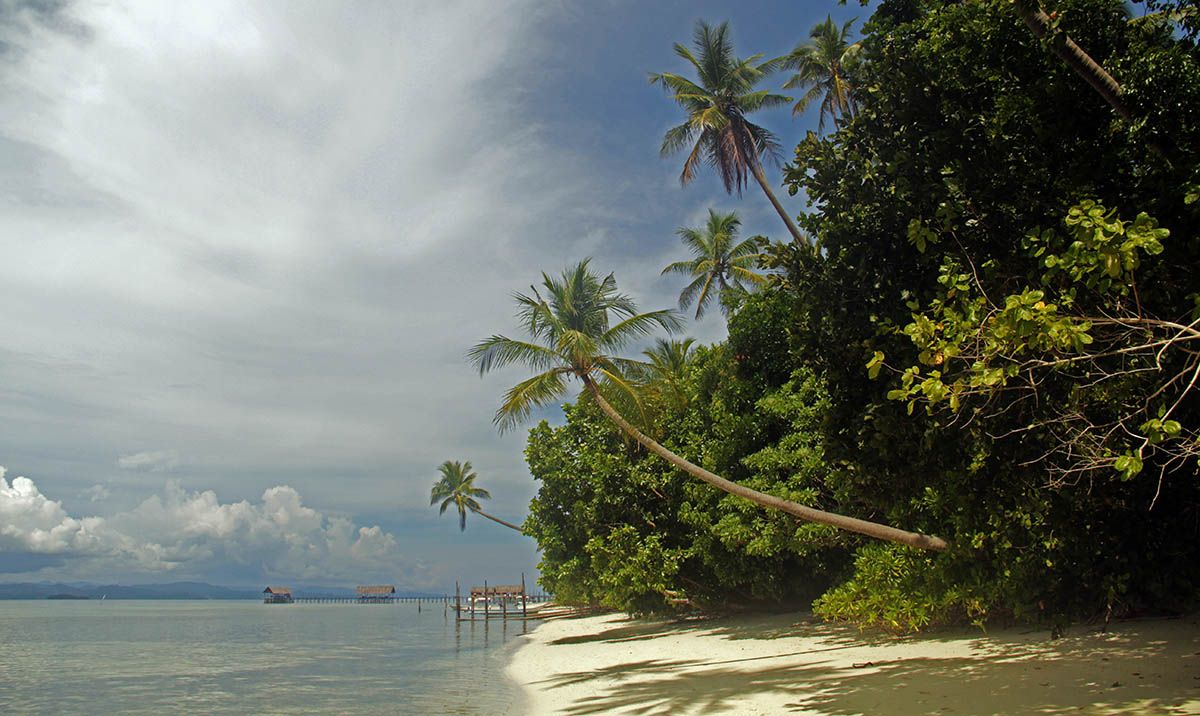
Transport in West Papua
Wandammen
Since there are no roads connecting Wandammen with Vogelkop, there are no cars. The population travels on foot, with mopeds or motorcycles and with a “vlerkprauw”, a narrow boat with floats on both sides. The main town of Wasior can be reached by boat from Manokwari and Ransiki. Wasior also has a flight strip but it is unclear which companies fly on it.
Bomberai
Although the Bomberai peninsula is quite large by Dutch standards, you have almost no opportunities to explore the area by motorised transport. Possibly the best option is to fly with Wings Air (a subsidiary of Lion Air) to the city of Fakfak. The airport is located about 6 kilometres west of the city. A taxi to the city costs around 60,000 rupiahs (about €3.50). In the city, you can ask your hotel for possibilities to discover the rest of the peninsula
Raja Ampat
There is a reason that not many people travel to Raja Ampat. The islands are quite far away and are pricey in relation to surrounding island groups. From the Netherlands, the fastest route is via Jakarta with a connection to Sorong, the port city just south of Raja Ampat.
From the airport of Sorong you take a taxi to the ferry port where you buy a single ticket for 100,000 rupiah (just under €6) for your crossing to the Waisai, the port city on Waigeo, the main island of Raja Ampat. The boats depart at 9 am and 2 pm in both directions.
In Waisai you must first purchase a permit for the marine nature area of Raja Ampat upon arrival. This costs 1 million Rupiah per person (where this money goes to is unclear. What is certain is that unfortunately not everything is used for the protection of the water world). Then you go with a smaller boat to your destination.
Most accommodations offer pick-up services but arrange this in advance. Keep in mind that boat trips – apart from the ferry from Sorong – are expensive! What many travellers do therefore is share the cost of the boat to their final destination. All in all, including waiting time, you’ll take 30 to 40 hours for a one-way ticket to your final destination.
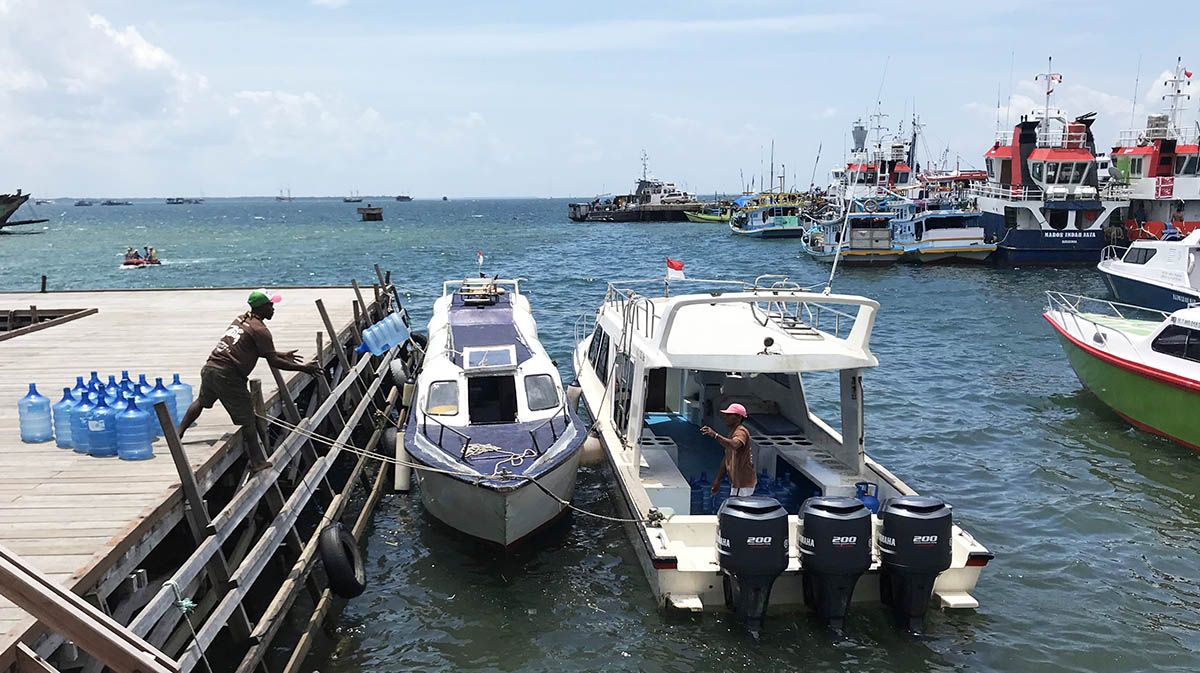
Once you are at your destination, most transport goes over the water. On the main island of Waigeo you have a lot of asphalt and therefore taxis and scooters are used. One day we rented a scooter for 150,000 rupiah through the taxi driver who took us to our resort. A fantastic option to explore the area well. You can leave your helmet at the wheel when you go for a walk. No one will steal it.
Highlights of West Papua
Because we mainly went to Raja Ampat for diving, we unfortunately lacked time to visit not only Raja Ampat but also the mainland of West Papua and the other parts of Indonesian Papua. We will visit this part of the immense island of New Guinea, of which Papua New Guinea is also part, during our next dream trip.
We want – apart from diving – to take in some culture in the Baliem valley and explore the wild interior and jungle in the Arfak mountains to also spot paradise birds. In Raja Ampat you can also spot these special birds on Batanta, Misool and Waigeo but unfortunately, we didn’t get around to it during our trip.

